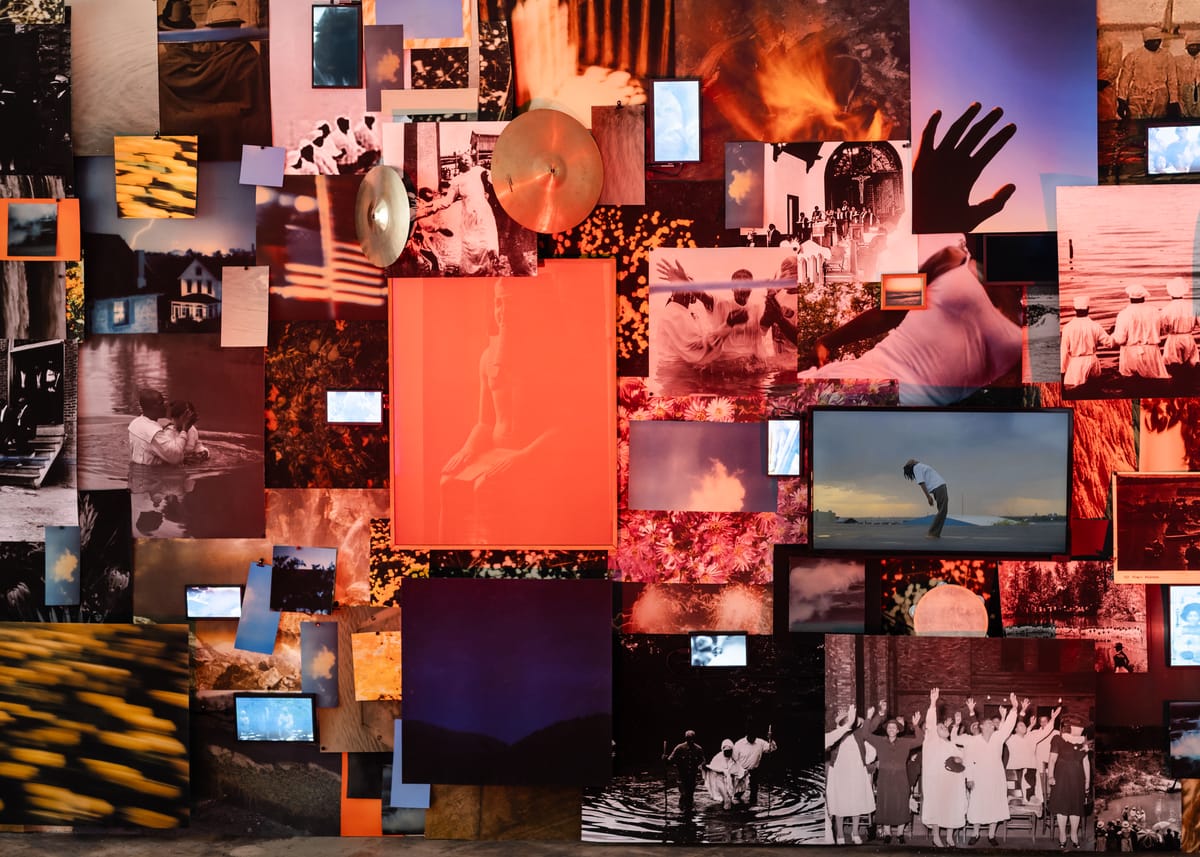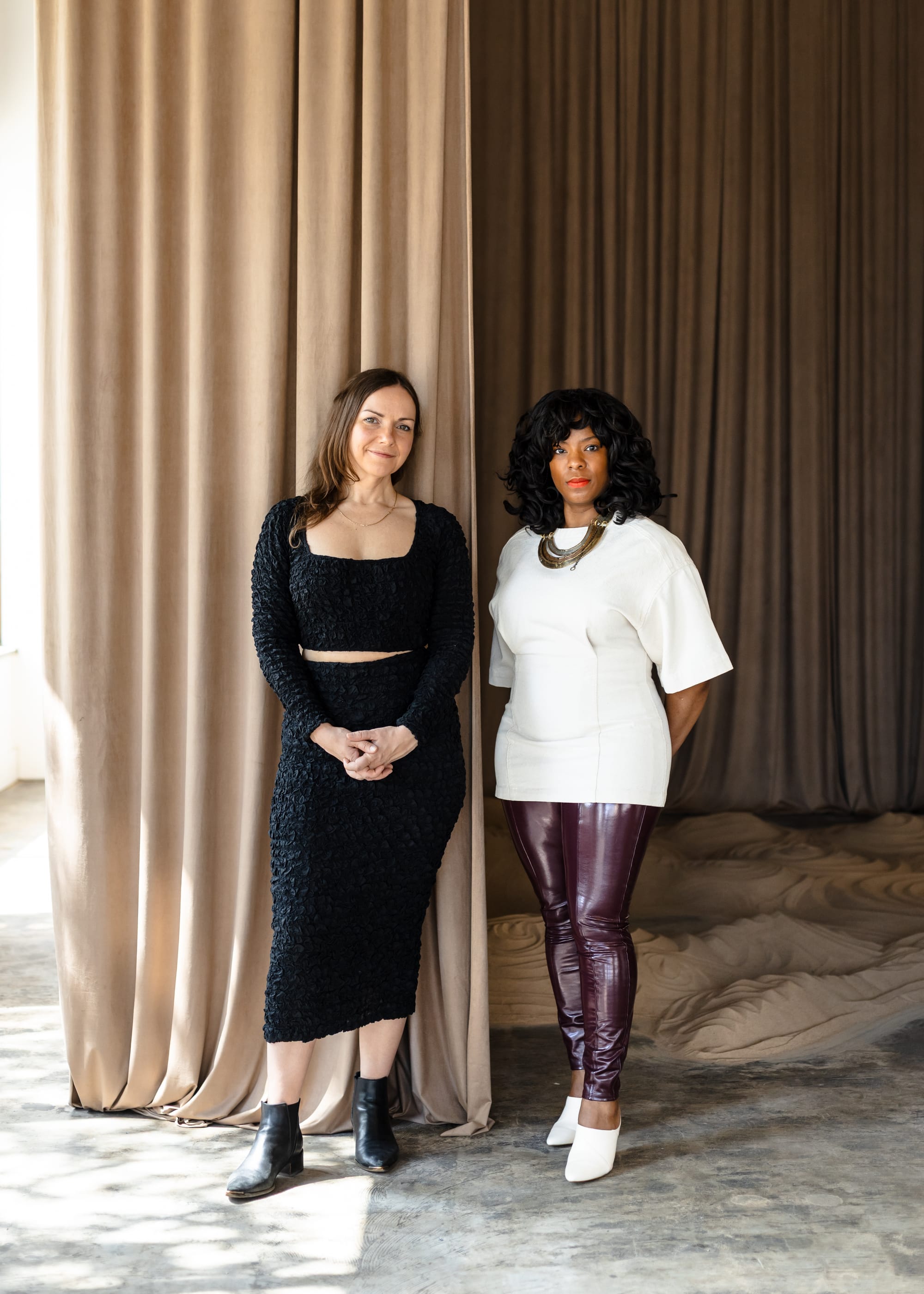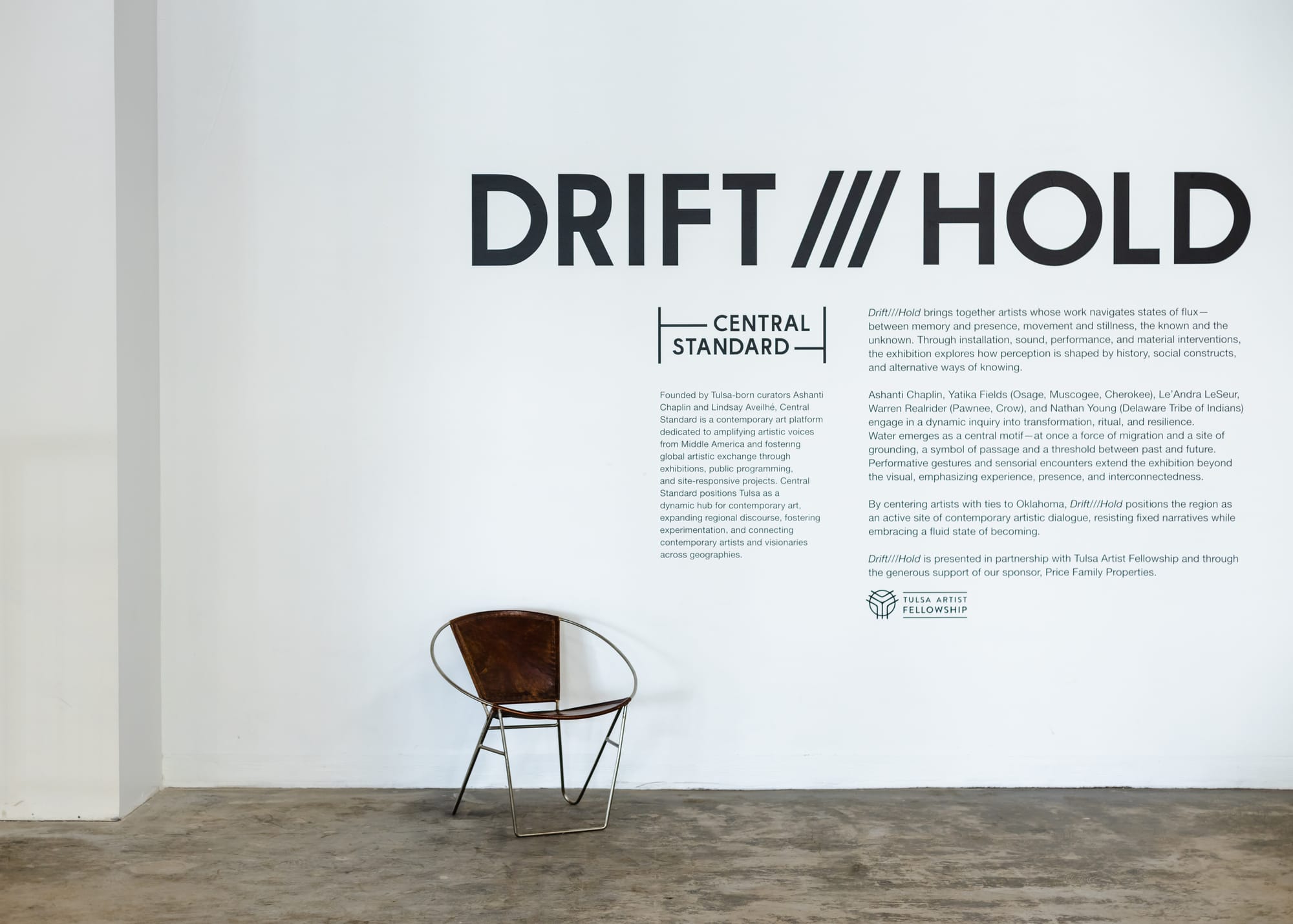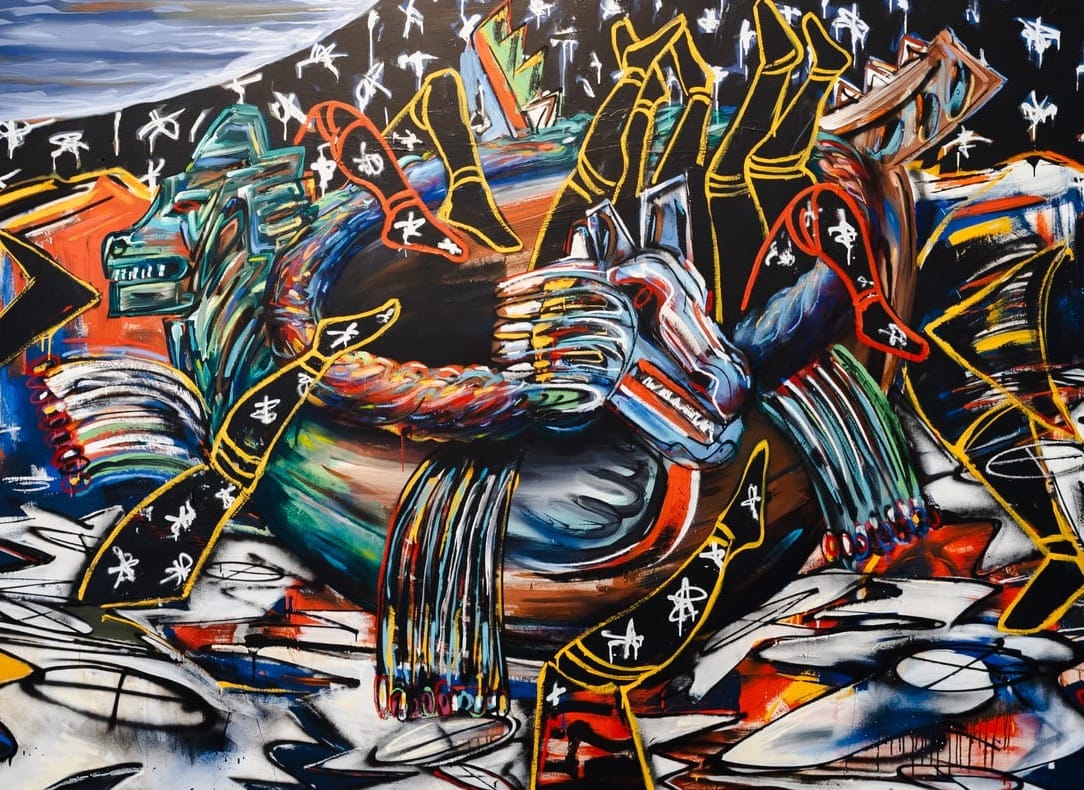
For many artists, establishing oneself in the arts world means heading east for galleries of New York City, or west for the sprawling landscapes of Santa Fe or Los Angeles. When picking an entry point, more often than not, Tulsa isn’t on the map. But curators Ashanti Chaplin and Linday Aveilhé think Tulsa is exactly the right ground on which to break creativity. So much so, they’ve launched a new global art platform to do it.
Chaplin and Aveilhé are the founders of Central Standard, a new platform dedicated to amplifying contemporary art from Middle America. Collectively, Aveilhé and Chaplin bring over 30 years of combined experience leading art institutions worldwide, but their latest project represents a shift away from the institutional. Neither a gallery nor a museum, and not quite a non-profit, Central Standard can be understood as a curatorial engine geared toward fostering global artistic exchange. Without a brick and mortar to anchor them, new possibilities are revealed — public shows, or private installations and events, always tethered by the work of Oklahoma-born and -based artists.


LEFT: Lindsay Aveilhé and Ashanti Chaplin
There’s a common conundrum that ambitious creatives from this part of the world often face: How can I produce at the level I want to in Oklahoma? Especially in the art world, where the nexus of activity has long been consecrated as New York, Miami, L.A. and European metros, Oklahoma doesn’t register as a place of significant cachet or artistic output. Central Standard is Chaplin and Aveilhé’s answer to this challenge.
Whereas this world may have historically overlooked Tulsa, Chaplin and Aveilhé see the region as home to a distinct, evolving and important artistic identity, and Central Standard as an opportunity to transmit that broadly. By connecting local artists with international collaborators and critics, Central Standard aims to create an artistic exchange where visionaries are connected across geographies, and where Oklahomans aren’t just learning from the art world, but where the world is also learning from the unique, evolving perspectives of Oklahoma.
Through the Tulsa Artist Fellowship (Chaplin is an alum, and Aveilhé is a 2025 fellow), the George Kaiser Family Foundation has invested significantly to bring artists and visionaries from the broader creative landscape to Tulsa for two-year residencies. But in some ways, even this sends a subliminal message that the so-called “art world” exists elsewhere — that it is something to go out and experience, or some place from which outsiders parachute in, bearing critique.
Rightfully or not, many Oklahoma creatives feel a need to leave the state to create work of “significance.” Even if those makers eventually return home, finding a path to produce at the same level here can be challenging. It prompts the question: What does it take to retain Oklahoma’s native creative talent? Is there another way to imagine the dynamic —one that doesn’t require its makers to take up permanent residency elsewhere, but instead leans into opportunities of creative exchange to elevate their work in the world?
In this version of the story, inspiration isn’t tied to some distant, proverbial world, but is instead found in the very soil on which we stand. This reframing gives us a narrative of homecoming, where Oklahomans feel a pull not to go, but to return to their roots— literally or metaphorically—and step back toward the creative identity that’s always been present and create from that context.
This is, in many ways, Central Standard’s origin story: two hyper-educated, Oklahoma-born creatives move to New York, thinking they need to be on the coasts to make meaningful work and enjoy successful global careers — only to have life, heritage or something altogether inexplicable call them back to Oklahoma.
Despite orbiting each other for years in the same art circles and nightlife, Chaplin and Aveilhé’s paths never crossed in New York. It wasn’t until they found themselves back in Tulsa — complicated feelings and all — asking the gripping question that plagues so many of us approaching midlife, that their respective rivers finally converged: Well, what now?
“For both of us, it was a story of being from here, but then being gone and not thinking we’d be back,” Chaplin explains. “But life changes, and we do come back. So we both had to redefine what this place is for ourselves, and that takes time, and getting over some things — your preconceived notions about a place, and your relationship to it.
“Even with all the support [of TAF],” Chaplin continues, “something about coming back almost had me feeling a bit like a failure. But what I didn’t realize at the time was that I needed this space to understand my own voice and intention as an artist. I could never have made the art I’m making now in New York City. It was tremendous wrestling. I also had this really profound spiritual awakening, and it changed my process. In New York, I’d been asking myself, ‘Is this work smart? Sellable? Commercially appealing?’ But when I got here and didn’t have those pressures, I told myself, ‘Well, each work will be a prayer.’ And that really opened me up, process-wise; if every work is a prayer, I can’t criticize it. I can’t say it has no purpose or intention. That really freed me to wander and make what I wanted to make.”
Wandering and freedom would become central to both Aveilhé and Chaplin’s work. For Aveilhé, this looked like curating The Soul Is a Wanderer, Oklahoma Contemporary’s ArtNow biennial exhibition in 2023. The exhibition was inspired by a line from the poem “A Map to the Next World,” a sort of elegy on ancestral wisdom written by U.S. Poet Laureate Joy Harjo (Tulsa; Muscogee Nation). Through Aveilhé’s curation and the poem’s invitation to remember the past and journey beyond the present, the show featured 13 artists’ explorations into Oklahoma’s complex histories, possible reimaginings of its future and a renewal of spirit — a return, perhaps, to what Harjo calls the “lush promise” we once knew so intimately.
For Chaplin, one of the show’s 13 featured artists, that freedom looked like getting into ceramics as a new discipline, and harvesting clay from Oklahoma terrain. Foraging the land opened up a line of questioning about clay, and finding questions and answers in the dirt. Her exploration led her to collect clay from the 13 remaining historically Black towns in Oklahoma, which she used to create an obelisk entitled “Earth Elegy” — a monument to what the ground still holds, and to reclamation of the sacred.


LEFT: Sediment as Reliable Narrative: Shroud Sand, fabric, sound, by Ashanti Chaplin
After the conclusion of The Soul Is a Wanderer, fueled by a shared connection in the work, Aveilhé and Chaplin started dreaming of what could be next, wrestling once again with whether they could produce the kind of work they loved in Tulsa, and if some kind of partnership might be the answer. It took some discernment, and a lot of nights of one asking the other how serious they really were, for something to break forth.
“We felt like we were one foot in, one foot out,” Aveilhé admits. “We had such a love for being here, but also hadn’t yet identified our deeper purpose here. We were stuck. So we said, ‘Let’s start thinking about what it would feel like to be two feet in. What would it look like for this to be the place we need it to be?’”
Eventually, Central Standard was born. The name is a nod to the time zone in which the project lives, and perhaps to elevating the standard and visibility of contemporary art in Oklahoma.
“We have two fantastic institutions here,” Aveilhé points out, “both collecting museums. But they have a lot of different requirements for what they do. And although they love it, they can’t always feature contemporary work. But we have a lot of contemporary artists here, and we realized we could help fill that need.”
Whether a matter of space, collection size or audience and donor interests, Tulsa’s existing art institutions are not exactly created for contemporary experimentation. Consider the buildings alone, and how the hulking structures color the works inside of them: the pedigreed, 100-year Villa Philbrook, its formal gardens, Italian Renaissance architecture and marble columns; or Gilcrease, with its deep collection of art from the American West and thousands of historic and archaeological artifacts. While both are best-in-class institutions, the tension of prehistoric artifacts juxtaposed with the contemporary and ephemeral might feel especially pronounced in such a venue.
Today, the same lines of inquiry explored in The Soul Is a Wanderer are finding expansion with Central Standard, and in particular, in its inaugural exhibition, Drift//Hold. Presented in partnership with The Tulsa Artist Fellowship, the show is currently on display in Tulsa’s ARCO Building, thanks in large part to a venue sponsorship from Price Family Properties. The exhibition features works from BIPOC artists Chaplin, as well as Yatika Fields (Osage, Muscogee, Cherokee), Le’Andra LeSeur, Warren Realrider (Pawnee, Crow) and Nathan Young (Delaware Tribe of Lenape Indians), and collectively explores themes of transformation, water as collective source, language and the fluid interplay between physical and metaphysical worlds.

It’s a stunning, sonically and visually arresting show that presents each work as being in conversation with the others —sometimes quite literally, as many of the multi-media works incorporate sound. As the pieces speak to each other, and as viewers listen in, they reveal a dialogue about memory and perception, ancestral wisdom, shared histories and liberation.
On a private viewing accompanied by Chaplin and Aveilhé, I found myself crying at Le’Andra LeSeur’s piece, “That body of (a reflection of the sky),” a freestanding, kaleidoscopic sculpture that uses collage, video, light, sound and original poetry to walk the viewer toward a baptism, or perhaps an anti-baptism. Accompanied by an audio excerpt from a sermon, the clanging of church bells from another piece in the show and those of the nearby Cathedral District, the piece evokes complicated feelings of collapse, renewal, ancestral wisdom and spiritual trauma found in healing waters. Especially when viewed against the symbolism of river as a road, Chaplin pointed out, which guided the forced migration of Native and Indigenous ancestors to Oklahoma, these ideas and emotions become even more pronounced.
Drift//Hold is emblematic of the kind of fluid study and communal conversation Central Standard aims to facilitate. And certainly, viewing it in Tulsa elevates its significance in a way that only the history and context of this particular place, these particular artists, perhaps this particular kind of platform could.
“[Our existing institutions] aren’t really interested in what we’re interested in,” Aveilhé insists, “which is encouraging artists to experiment and create new things. We’re not trying to be a commercial gallery or sell blue chip work and artists. We’re trying to build a community. We want to amplify work being created in this region, but we also want to be in conversation with people outside of here. ‘Exchange’ is probably at the core of what we’re trying to do.”
Chaplin and Aveilhé said Central Standard will be itinerant in concept for the foreseeable future, “until we feel like we have some really profound support from our community, and outside of our community.” As for that itinerary, it includes another five projects currently in development, some of which are being conceived for their current space, and others that might be most successful someplace else. If done right, Central Standard believes it can create spaces where art is “fluid, interdisciplinary and truly inclusive,” and establish Tulsa as a global, dynamic hub for contemporary art.
In the words of Chaplin, “If you can’t find it, you gotta make it.”
Drift//Hold is on view at Tulsa’s ARCO Building until April 18. A companion exhibition titled I Put a Spell on You, featuring artist Kalup Linzy, is also on view by appointment at OATH Studio through April 29.

